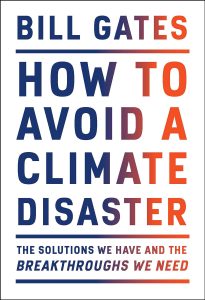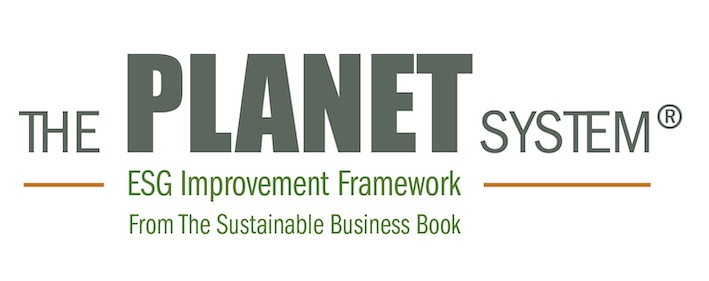 How to Avoid a Climate Disaster – Bill Gates
How to Avoid a Climate Disaster – Bill Gates
One sentence summary: Figuring out how to get all the benefits of cheap, reliable power without greenhouse gas emissions (through investment and innovation) is the single most important thing we must do to avoid a climate disaster.
WHAT THE BOOK SAYS
- There are two numbers you need to know about climate change. The first is 51 billion. The other is zero.
- 51 billion is how many tons of greenhouse gases the world typically adds to the atmosphere every year. Zero is what we need to aim for (to stop the warming and avoid the worst effects of climate change).
- There is no scenario in which we keep adding carbon to the atmosphere and the world stops getting hotter. And the hotter it gets, the harder it will be for humans to survive, much less thrive.
- 1/5 of carbon dioxide emitted today will still be there in 10,000 years.
- It is estimated that Covid reduced emissions to 48 or 49 billion tons of carbon – a reduction of around 5%. But consider what it took to achieve this 5%. A million people have died, and tens of millions have been put out of work. Not a situation that people would want to continue or repeat.
- Gates acknowledges he is an ‘imperfect messenger’ and that he can easily be seen as just ‘another rich guy with an opinion’.
- And he came to focus on climate change in an indirect way – through the problem of energy poverty. This was something highlighted by his and his wife Melinda’s work at the Gates Foundation.
- Their motto is ‘Everyone deserves the chance to live a healthy and productive life’.
- Here lies a major tension. Is it fair to tell someone from a poor area of India that their children can’t have lights to study by (because they can’t afford green energy), or that thousands could die in heat waves because installing air conditioners is bad for the environment?
- He asserts: it would be immoral and impractical to try to stop people who are lower down on the economic ladder from climbing up.
- We need to accomplish something gigantic we have never done before, much faster than we have ever done anything similar.
- Figuring out how to get all the benefits of cheap, reliable electricity without greenhouse gas emissions is the single most important thing we must do to avoid a climate disaster.
- One major issue is just how ubiquitous fossil fuels are (or how reliant we are on them). And there’s a good reason why fossil fuels are everywhere – they’re so inexpensive (oil is cheaper than a soft drink).
- One of the trickiest things about eliminating greenhouse gas emissions is that more of them come from industrial processes like making steel, cement and plastics than from generating electricity or driving cars.
- This is a major issue because it is estimated that by 2060 the world’s building stock is set to double (which is the equivalent of a new New York every month for 40 years).
- There are five questions to ask in every climate conversation:
- How much of the 51 billion tons are we talking about? Convert tons of emissions to a percentage of 51 billion to get a clear (like for like) picture.
- What’s your plan for cement? Consider everything that humans do to cause greenhouse gas emissions. Here’s how much greenhouse gas is emitted by the things we do:
- Making things (cement, steel, plastics) = 31%
- Plugging in (electricity) = 27%
- Growing things (plants, animals) = 19%
- Getting around (planes, trucks, cargo ships) = 16%
- Keeping warm and cool (heating, cooling, refrigeration) = 7%
- How much power are we talking about? Kilowatt = think house; Gigawatt = think mid-size city; 100+ Gigawatts = think big, rich country.
- How much space do we need? Some power sources take up more room than others.
- How much is it going to cost? What is the ‘green premium’? We need premiums to be so low that everyone (country) will be able to decarbonise.
- The Paris Agreement was an achievement. Not necessarily because the current commitments will make a huge dent in emissions, but because it was a starting point that proved global cooperation is possible.
- The only way to make it easier for middle- and low-income countries to reduce their emissions is through rich countries taking the lead in clean energy innovation (that brings green premiums down).
- Lowering the green premiums that the world pays is not charity. Rich countries shouldn’t see investing in clean energy R&D as just a favour to the rest of the world. They should see it as an opportunity to make scientific breakthroughs that will give birth to new industries composed of major new companies, creating jobs (and reducing emissions at the same time).
- Health experts were telling us that a massive disease outbreak (pandemic) was virtually inevitable. Despite their warnings, the world didn’t do enough to prepare – and then suddenly had to scramble to make up for lost time. If we start now, tapping into the power of science and innovation and ensuring that solutions work for the poorest, we can avoid repeating the mistakes of pandemic preparation with climate change.
- Although we have a number of cost-competitive low-carbon solutions today, we still don’t have all the technologies we need to get to zero emissions globally. Advanced technologies needed include (Gates includes a full list in the book):
- Zero-carbon cement and steel (as well as fertilizer and plastics)
- Hydrogen produced without emitting carbon
- Electrofuels
- Grid-scale electricity storage that can last a full season
- Next-generation nuclear fission, and nuclear fusion
- Carbon capture (both direct air capture and point capture)
- But innovation is not just a matter of inventing a new machine or some new process; it’s also coming up with new approaches to business models, supply chains, markets, and policies that will help new inventions come to life and reach global scale. Innovation is both new devices and new ways of doing things.
WHAT YOU HAVE TO WATCH
This is not going to sit comfortably with everyone. For anyone championing de-growth and the issue of global over-consumption, there is little here (largely because of his deep-seated belief that ‘everyone deserves a change to live a healthy and productive life’). And innovation in areas such as nuclear will naturally prompt concern and scepticism. But it is a practical and authorative read. And one could argue that we need the likes of Gates onside to tackle the enormity of the challenge.





Leave A Comment
You must be logged in to post a comment.